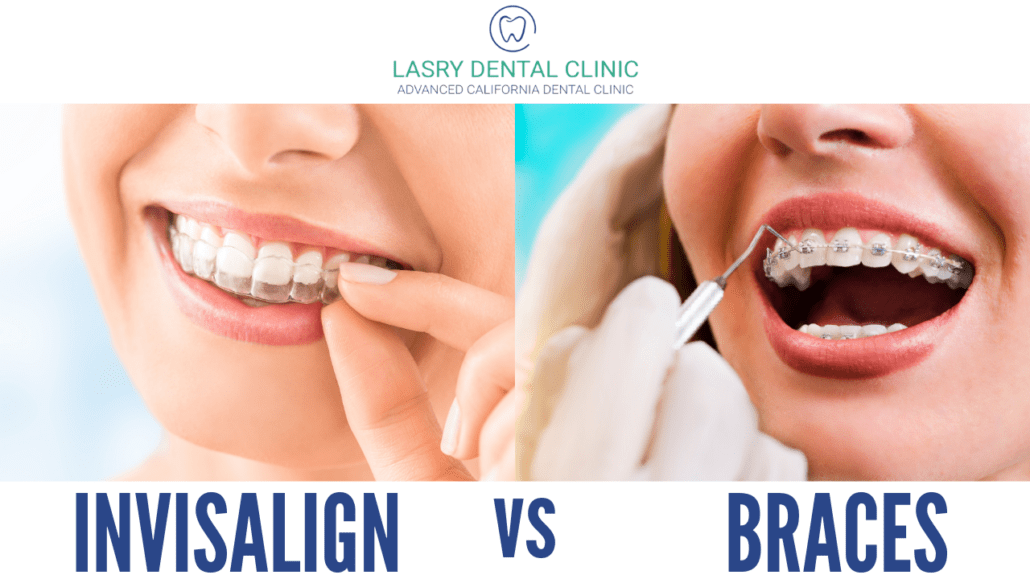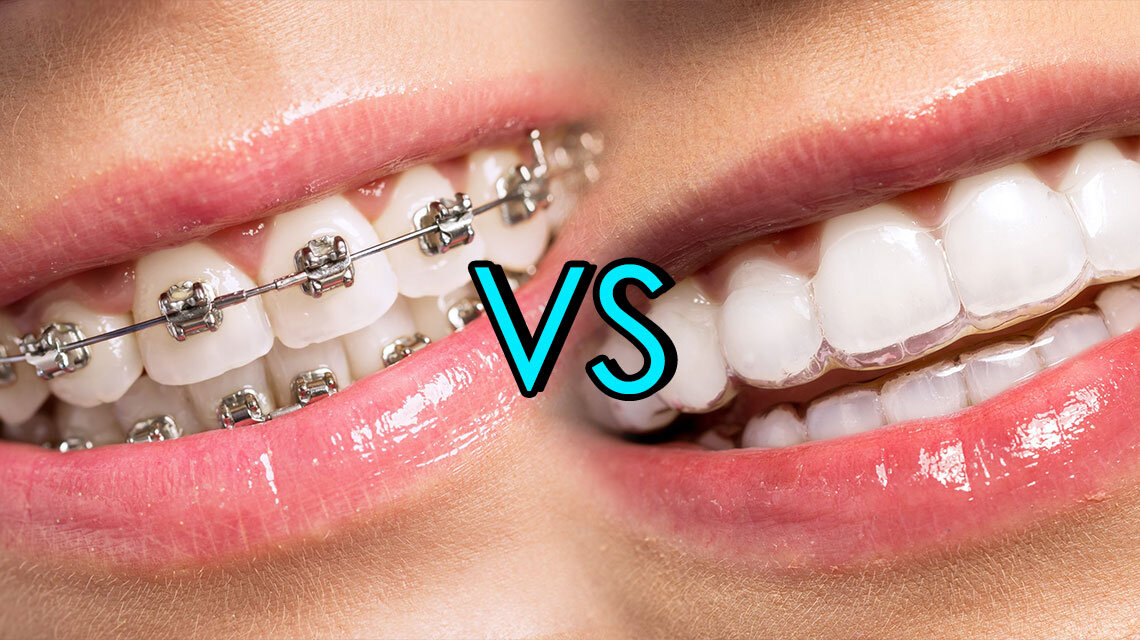What to Expect During Your Invisalign Journey: A Comprehensive Review
What to Expect During Your Invisalign Journey: A Comprehensive Review
Blog Article
Invisalign vs. Conventional Braces: Which Choice Is Right for You?
When taking into consideration orthodontic therapy, the selection between Invisalign and conventional dental braces presents several crucial factors that warrant mindful examination. Invisalign offers a very discreet choice with detachable aligners, while conventional braces provide an extra noticeable yet efficient service for serious imbalance.
Summary of Treatment Choices

On the other hand, conventional braces contain metal braces and cables that are bound to the teeth. This technique applies continual stress over time to accomplish alignment. While effective for intricate orthodontic issues, traditional braces call for routine brows through for changes and can posture challenges in maintaining oral health due to the difficulty of cleaning up about wires and braces.
Both choices have their qualities, and the option commonly depends upon certain dental conditions, way of life choices, and individual conformity. Inevitably, speaking with an orthodontic professional is vital for figuring out the most suitable treatment plan tailored to private requirements. Recognizing the nuances of each alternative can substantially influence the general success of orthodontic treatment.
Visual Considerations
A significant variable influencing the option in between Invisalign and standard dental braces is the aesthetic charm each therapy offers. Invisalign aligners are crafted from clear plastic, making them basically invisible when put on. This discreet appearance is specifically interesting grownups and teens that may really feel uncomfortable concerning their orthodontic therapy. The capability to maintain a natural smile throughout the alignment process can considerably improve the client's self-confidence in social and specialist settings.
On the other hand, conventional dental braces contain metal braces and cables, which can be much more noticeable. While developments in orthodontic technology have resulted in the advancement of smaller sized braces and colored elastics, typical braces still preserve a more obvious account. For some people, the presence of braces might hinder them from seeking essential treatment.
Ultimately, the selection between Invisalign and typical dental braces may rest on personal choices relating to visual appeals. Clients that focus on discretion frequently favor Invisalign, while those that are much less concerned about exposure might go with conventional braces. Recognizing the visual effects of each option is essential for making a notified decision that lines up with one's way of life and preferences.
Comfort and Convenience

In terms of benefit, Invisalign aligners are removable, enabling clients to enjoy their favored foods without limitation and maintain optimal oral hygiene. Brushing and flossing are simplified, as the aligners can be secured during these regimens, whereas conventional dental braces require cautious maneuvering around braces and cords.
In comparison, standard braces necessitate regular modifications, making them less convenient for those with active schedules. Generally, useful content the comfort and comfort of Invisalign make it an attractive option for several people seeking orthodontic treatment.
Treatment Duration and Effectiveness
While both Invisalign and conventional dental braces work in dealing with dental imbalances, the period of therapy can differ considerably in between both options. Typically, Invisalign treatment can take anywhere from 12 to 18 months, depending upon the complexity of the case. The clear aligners function by gradually moving teeth right into their wanted placements, and normal follow-ups with an orthodontist help guarantee progress continues to be on the right track.
On the other hand, standard dental braces often need a longer commitment, generally varying from 18 months to 3 years. This is because of their fixed nature and using brackets and cords, which can be much more reliable for extreme imbalances and intricate instances (Invisalign). The therapy effectiveness of traditional dental braces is well-documented, as they permit exact modifications and greater control over tooth movement
Inevitably, the option between Invisalign and typical braces may hinge on both the anticipated treatment duration and the details oral concerns available. important link Consulting with an orthodontist is essential, as they can supply customized referrals based upon individual needs, guaranteeing the chosen approach aligns with wanted end results and timeframes.
Price Contrast and Insurance Alternatives
Expense plays a significant duty in the decision-making process for individuals considering orthodontic therapy, whether going with Invisalign or standard dental braces. Typically, the cost of Invisalign arrays from $3,000 to $8,000, while standard dental braces generally cost in between $2,000 and $6,000. Factors affecting these prices consist of the complexity of the instance, the period of treatment, and geographical area.
Insurance insurance coverage can substantially affect out-of-pocket expenses. Lots of dental insurance policy plans offer partial insurance coverage for orthodontic treatments, yet the specifics can differ commonly. It is crucial for people to evaluate their insurance coverage to identify the degree of coverage for either choice. Usually, typical braces might be much more regularly covered by insurance coverage strategies contrasted to Invisalign, which some insurance firms categorize as an aesthetic treatment.
Furthermore, a number of orthodontic methods use flexible layaway plan, making both treatment alternatives more available. Individuals must ask about prospective financing alternatives and price cuts for ahead of time repayments. Evaluating the total expense, including click over here insurance coverage advantages and layaway plan, is essential for making a notified decision that aligns with both visual preferences and spending plan factors to consider.

Final Thought
In recap, the option in between Invisalign and traditional braces depends upon multiple variables, including visual preferences, convenience, treatment period, and expense. Invisalign provides a very discreet, detachable alternative that assists in dental health and dietary adaptability, while conventional braces might be extra ideal for complex oral problems and commonly come with a lower price point. Inevitably, consultation with an orthodontist is vital to assess individual circumstances and establish one of the most proper therapy alternative for achieving optimal dental placement.
When taking into consideration orthodontic therapy, the selection in between Invisalign and conventional braces presents numerous vital factors that merit careful analysis.Contrasting Invisalign and traditional dental braces discloses unique therapy alternatives for orthodontic correction.While both Invisalign and traditional dental braces are efficient in correcting oral imbalances, the period of treatment can differ considerably in between the two choices.Cost plays a significant duty in the decision-making procedure for individuals considering orthodontic treatment, whether choosing for Invisalign or traditional braces.In recap, the option in between Invisalign and traditional braces pivots on several elements, consisting of visual preferences, comfort, treatment period, and price.
Report this page